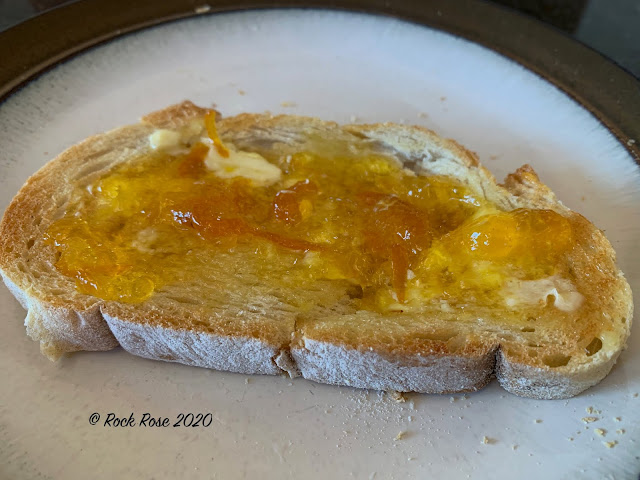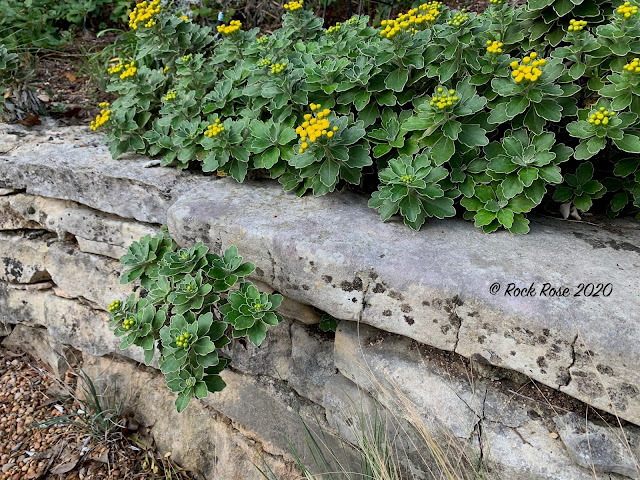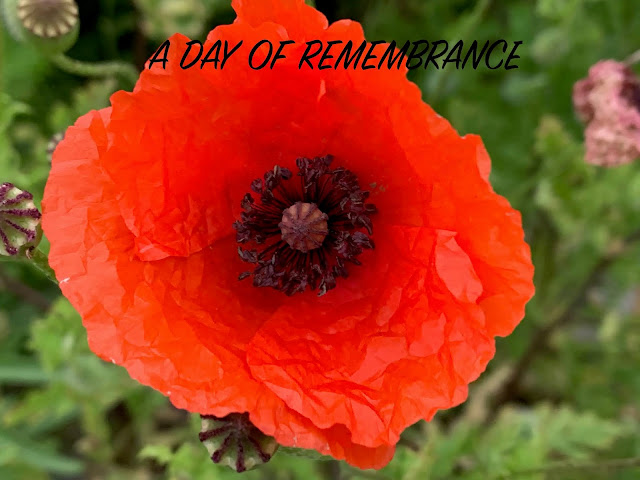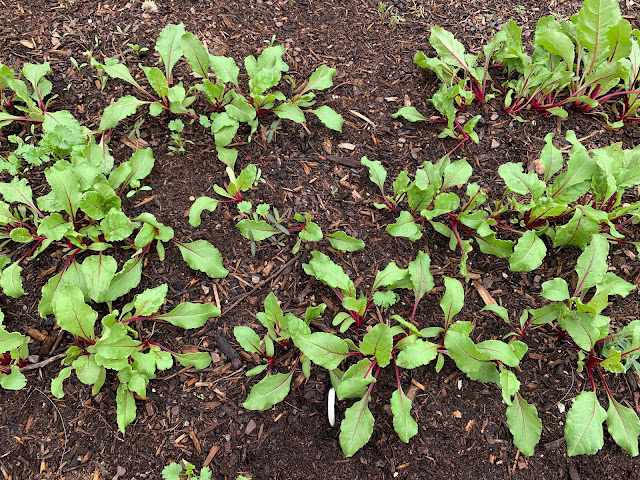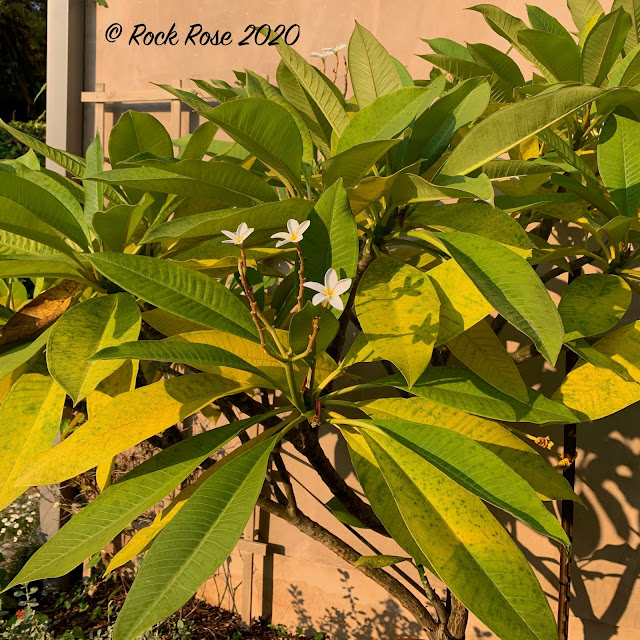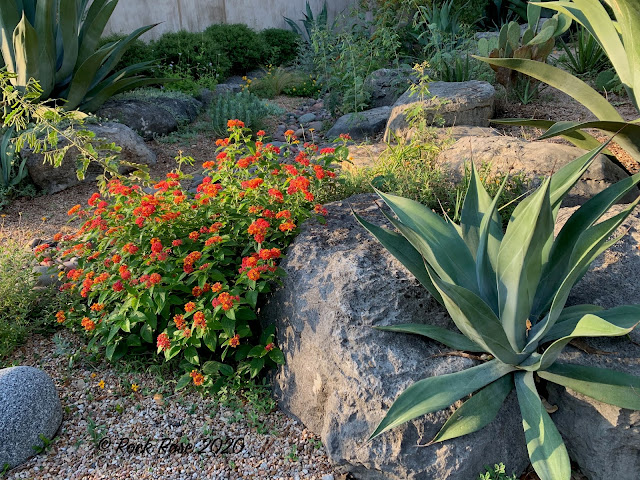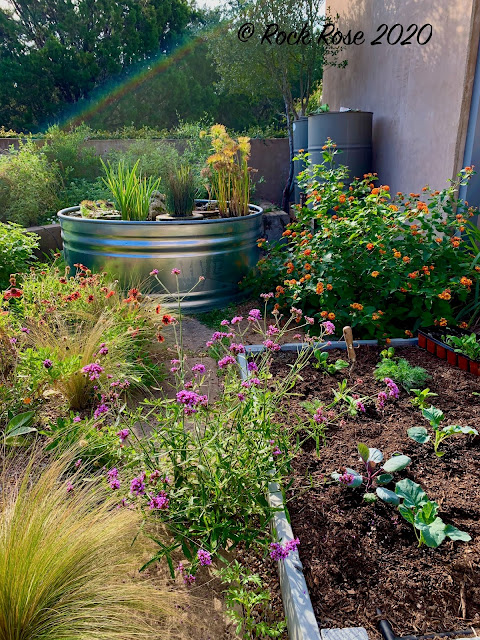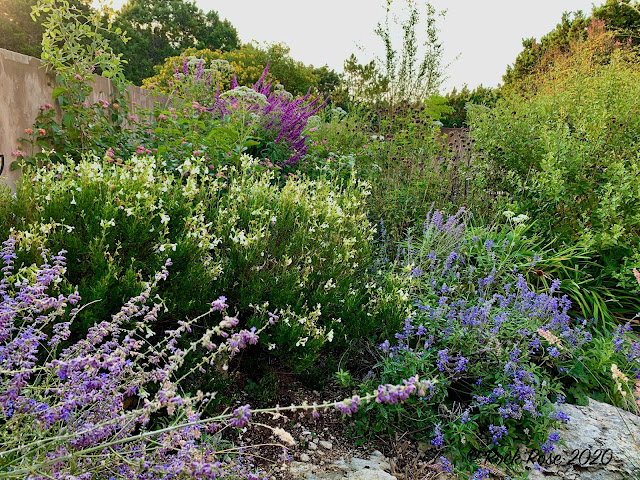More time spent at home means more projects and at this house they are lining up and waiting to be done. The mirrored wall boxes were in need of some refurbishment as the wood had begun to rot on a couple of them and one mirror was cracked. I'm sure our feathered friends who spend much time staring at themselves and pecking the glass would appreciate it. The original boxes were on the outside of the front wall where they give the impression of windows looking into the garden.
Wednesday, December 23, 2020
THE MIRRORED BOXES
Monday, December 7, 2020
KALE AND CALAMONDIN
This time of year two wonderful garden crops are ready to bring into the kitchen. In the heat of summer I was anxiously awaiting cooler days and the vegetable garden rewards of our mild winters. I sowed seeds of kale, chard and pak choi in 4" pots in my laundry room moving them to the potting shed and under lights when they had a few leaves. This gives them a head start and a better chance of surviving the ravages of the decollate snail and pill bug decimation. I chose the curly kale because we like the slightly bitter taste. Not only do they have a high germination rate but they stay viable for a number of years.
The packet I used was packed for 2017. The leaves are now of a good size for picking with 6 leaves enough for a meal for the two of us. I find kale much easier and more worthwhile to grow than spinach. If you are going to grow kale it pays to find some good recipes. Yesterday morning, in a chapter on winter greens, in a 2006 edition of Bon Appetit magazine, I found the following recipe.
Other than the fact I did not have the more exotic mushrooms (I used baby bellas) I had all the other ingredients to hand including the thyme which I also grow.
It looks exactly like the photo in the magazine and was absolutely delicious. A definite keeper. We had it for dinner but it would make a really great special lunch dish too.
Later on in the day I went into the garage to make the first picking of calamondin fruit. The plants were wheeled into the garage a week ago because of an impending freeze. We were far more sensible this year keeping the pots on the driveway all summer and then using various wheeled carts to bring them in. They are now permanently on a variety of carts for the winter so we can easily transport in and out.
When we lived in Hong Kong we saw hundreds of these trees at Chinese New Year. They are given as gifts and represent good luck and wealth. The Chinese word for the tree is very similar to the word for wealth. But they are more than just decorative trees they make the most delicious marmalade.
Making this marmalade is a real labor of love but so worth it for the absolutely delicious sweet/tart combination of flavors which we love on our toast at breakfast. And there is absolutely no waste as every scrap of the fruit is used, even the pips! Here's how to use your calamondins.
Cut the oranges in half.
Squeeze each half, to remove all the pips and juice, into a sieve over a a bowl. Then slice all the fruit peels thinly and add to the juice. Tie the pips in a muslin bag. For each cup of fruit add 3/4cup water into a large non-reactive pan tying the muslin bag so it is in the mix. Boil for 20 minutes. Cool and leave overnight in the fridge to allow the pectin to develop.
Measure the fruit again and for each cup add one cup of sugar. No pectin needed.
Pour into sterilized jars. No need to can. First batch completed. Lids popped and a good set achieved.
So incredibly delicious on my morning toast.
Friday, December 4, 2020
SISSINGHURST The Dream Garden. A book review
While visiting gardens has become more difficult in the last year and travel to far-off lands out of the question there is still one thing that gardeners can do and that is read about gardens. Here is a book that has me dreaming about a return visit to the gardens at Sissinghurst, armed with even more knowledge about that garden and its makers.
Sissinghurst is surely one of the gardens that is top of the list when visiting gardens in England. The first time I visited I looked at it only as a garden, wowed by the garden rooms, those views from the Tower, the White Garden and a very brief introduction to Vita Sackville West and her husband Harold Nicolson, the makers of the garden. Before leaving I purchased the National Trust book Sissinghurst. Portrait of a Garden so I could learn a little more. Since then I have purchased several books written by both garden writers and family. I was captured by this couple, their unusual marriage but mostly how they, with different ideas about how to garden managed to pull off such a wondrous place. My feeling is that you will never truly understand this garden unless you know something of its history, even though that history is less than 100 years.
At the very start Richardson says "I am not going to make any excuses for the wilful intermixing, in this book, of sturdy horticultural description with biographical detail and speculation regarding Harold and Vita's intellectual and aesthetic motivations." In this respect the book offers a newer look at the garden and its makers.
After a short introduction to the garden makers and how they came to purchase Sissinghurst, you begin to understand why this garden is so important. Each chapter takes you on a walking tour of the garden. moving from one garden to another learning, if things have changed, how it was in Vita and Harold's time, what happened after their death when it became part of the National Trust. It begins in the entry garden where, like the visitors in Vita's day, you now pay your 'shilling' to enter.
"And then the visitor gains a first proper glimpse of the tower directly ahead, framed by Sissinghurst's gateway. It is a a transfixing moment, especially as the tower has not loomed particularly large until now. "
If you love roses then you will enjoy the chapter on the large collection of roses in the Rose garden before moving to the lime walk and a complete change in character. The one area of the garden which Harold not only designed but also planted. The walk takes you through the nuttery, the herb garden (about as far away from the kitchen as you could get) the orchard to the famous White Garden, and finally to the new Delos Garden. There is a short chapter on the new Delos Garden which was the name Vita gave to the Mediterranean garden she tried unsuccessfully to create at Sissinghurst. Dan Pearson was the designer given the task of designing and implementing the garden in the rather cold and inhospitable winter climate. I wonder if Vita would have been happy. The garden has seen many changes since taken over by the Trust and Tim Richardson admits he thought he knew the garden well until he undertook this project.
Whether you have the chance to visit the garden or only in the pages of this book you will be sure to leave with a sense of what makes the garden so important and visited by thousands from all over the world every year.
I was offered this book to review and have really enjoyed pleasant days of reading during these Covid times.
Sissinghurst The dream garden by Tim Richardson, foreword by Dan Pearson, Photographs by Jason Ingram. published by Frances Lincoln.
Tuesday, November 24, 2020
Saturday, November 21, 2020
GARDENING IN NOVEMBER
November is a busy time in the garden. Winter vegetables need to be tended and direct sowing of seeds. And there are seeds to be saved from summer bloomers. November finds my counters littered with saved plastic boxes filled with dried seed heads waiting for a little finger work. Tender plants are already in the greenhouse safe from expected frosts-although so far we have been fortunate. Apart from a few nights of temperatures in the high 30s we are now having Indian summer which is a lot nicer than a Texas summer. Warm dry days and cooler nights. The plants are loving it.
There are many years when the Copper Canyon daisy, Tagetes lemmonii, never gets to bloom. It can be so late that an early frost nips it in the bud. This year, however, it is spectacular.
The same is true of the Gomphrena 'grapes' Because it is a late bloomer it rarely get chance to bloom. In the end I gave the original plant away, but it had left behind some seedlings in the gravel, which I left, and this year the plants are blooming beautifully. They grew like spindles all summer and then about a month ago they started to produce flower heads. Maybe I will try to transplant into a place at the back of the border where they can mingle in among other plants including Verbena bonariensis. It is best grown where it can grow through other plants.
Ajania pacifica, is another good fall bloomer. It is quite the spreader but easy to pull and performs well in a rock garden setting.
But it is seed collecting time for many of the fading summer bloomers including the globe gomphrenas, pink and purple although not entirely necessary as they usually naturalize-sometimes a little too vigorously. Gomphrena 'fireworks' gives off a curry smell in the fall. The first year I grew the plant I remember thinking that one of my neighbors was busy making an Indian dinner! Since then it has shown up everywhere although none seems to have escaped the garden. It has a big tap root which often results in it overwintering. All the gomphrenas leave a lot of mess behind when the petals start to fall. Confetti time.
I have so many blanket flower and verbena seedlings that I have to move some of them to places where I would like them. Not in the pathway, although alyssum and daisy fleabane can stay. I will probably pull out the Mexican feather grass that is growing alongside it.
I have already transplanted a few Larkspur from the vegetable beds to the sunken garden. I just have to make sure that the snails don't eat the seedlings before they are big enough to stand on their own two feet.What's going on in your garden?
Fruit is ripening on the citrus but it will be a few more weeks before I pick the kumquats and the calamondin to make marmalade. Lots of work but so worth the end result. We are terribly finicky about our marmalade and like the sweet/tangy taste when made from these little fruits.
Kumquat
Calamondin
Improved Meyer lemon
I'm having one of the best winter vegetable garden seasons in quite a while. Already harvested pak choi, chard, peas and beets broccoli and carrots are well on the way to a good harvest.
It's not often we get a successful pea harvest in the fall unless we protect the crop from frosts. This year, so far, no frost but then no rain either.
This variety is Cascadia which I have the best success with in spring. It produces tender posts that can be eaten at all stages from snap to full pod. They remain crisp and stringless.
I don't know what I would do without my garden as it has kept me busy during these difficult stay-at-home days.
Wednesday, November 11, 2020
Tuesday, October 20, 2020
TEXAS SNAKES. A review
The holiday season will be upon us soon and the mad panic for gifts. What to get the avid gardener or nature lover? Here's an idea. Texas Snakes, by James R. Dixon, John E Werler, and Michael R. J. Forstner. Published by the University of Texas Press.
Just a few days ago I found a snake in my water collection system. Feeling rather guilty I fished him out, (I think he had been in there for a while because he didn't slither off) went in the house to get my camera and took his photo. His markings were certainly different from the more common snakes we see around the garden. After checking in this guide I decided he was plains hog-nosed snake. I'm pleased to say when I went the check the next morning he was gone.
I posted his picture on face book and almost immediately someone asked if he was poisonous. Isn't that what everyone always wants to know. Many people think only of the venomous snakes and to many every snake out there is just that.
I like the fact that the books answers these questions right away. Turn to the first two pages in this book and you will see listed 108 non-venomous snakes and only 16 venomous ones. And of those 8 are rattle snakes and 3 are copperheads. In the introduction a number of pages are given over to each of the latter. Enough maybe to allay the fears of many and ways to reduce the chances of snake bites.
The book gives a good basic education on the habits of snakes and why they are so important to the environment. By far the larger content of the book is given to non-venomous snakes to be found in Texas and illustrated with excellent color plates.
Perhaps reading this book might just save your life and a snake's life too.
Wednesday, October 14, 2020
FALL IN THE VEGETABLE GARDEN
Over the last few weeks I have concentrated some of my gardening time( just an hour or so a day is still all I can manage) on preparing the vegetable and herb garden for the fall/winter growing season. Arguably the variety of crops that can be grown successfully over winter far out-number those grown during the spring/summer season, although some of the fall plants will mature during the early spring.
Before I could even begin to prepare the beds I had to first remove much of what had been growing in the pathways all summer. This included the many grasses, blanket flowers, gomphrena, pink, purple, strawberry and 'Fireworks." I am always torn between having flowers spilling over the pavers and the neat and tidy look of having nothing to impede moving around when working out there. When I clean everything out in the fall I know this is the look I like but then when they all start growing in the spring I like that too. How to balance this with the hours spent removing them is the challenge at this stage in my life.
Even now I have left a few to enjoy the last of their blooms.
Then I had to tackle the beds themselves, removing the layer of cedar mulch that had been been on there for 2 years saving it to either mulch another area of the garden or return to the beds after planting. Each bed got one bag of new 'garden soil' purchased from a big box store.
We decided that because our gardens are so difficult to access that it was more economical on the body to move them by the bag. Plus we no longer have a truck to transport bulk material.
Weeks ago I started some winter vegetables inside, under grow lights. I find they stand a better chance against snails and caterpillars if they are a decent size when planted outside.
 |
| broccoli, baby pak choi, kale |
 | ||||||||||||||||
| red cabbage, parsley |
Beets and carrots were sown directly in the ground. They are now up and growing well. One of my weaknesses is my inability to pinch out plants but with the beets as soon as they are big enough to add to the salad bowl. I promise I will!
Kale, pak choi, broccoli and cabbage are now all big enough to go into the ground.
I have a few packets of seeds including Napa cabbage, lettuce and radish which I will direct sow over the next few weeks.
Peas are struggling with the heat. I probably planted a little early.
We kept the citrus trees out on the driveway this year, mainly for ease of transport into the garage during periods of freezing temperatures. All that is except the smaller kumquat and the orange. The kumquat was a rescue citrus and it was a few years before I even knew what it was. Last year was the first fruiting which has increased this year. It makes great marmalade.
I see the beginnings of ripening on one of the fruits.
The orange tree has not done so well. One last chance to improve itself!
Wednesday, October 7, 2020
GOODBYE SUMMER, HELLO FALL
At last! Temperatures are moderating and fall is on the way. It is not just the gardener who is celebrating the advent of the new season but the garden plants are too.
All that is except the plumeria. A few nights of temperatures in the 50s and it is already beginning to cry "I'm out of here" Shortening days mean the plant starts to cut back on food production, the leaves turn yellow as the supply of food is reduced. The leaf forms an abscission layer and eventually falls off.
Every day new leaves fall and soon it will be time to move the plant into the garage. During the winter it will receive no water and will go completely dormant. Because the plants are so large I plan to do some pruning before I move them which will make the job a lot easier.
Flower colors become more vibrant as with the native orange lantana, Lantana horrida. And the award winning David Austin rose, Rosa 'Molineaux', blooming again for the first time in months. This shrub rose is a repeat bloomer and named for David Austin's favorite soccer team.
There are lots of flowers that are repeat blooming such as the Verbena, Verbena bonariensis whose lanky growth was cut back to the ground a few weeks ago.
Another repeat bloomer is the soft leaf yucca, Yucca recurvifolia, which the deer have failed to find.
It has become quite a free-for-all of flowering plants in the sunken garden with Perovskia, white Salvia greggii, mealy blue sage, Salvia farinacea, frost weed Verbesina virginica, and Mexican bush sage, Salvia leucantha.
But there are some plants that bloom only in the fall. They wait patiently for the shorter days before they begin to bloom. Notable in my garden is the Philippine violet, Barleria cristata.
It blooms best when given plenty of sun and is one of my favorite fall bloomers because it attracts neither bugs nor disease. It dies to the ground during a normal winter and shifts a little from its original positions as the center often becomes very woody and dies out.
And finally the bush clover, Lespedeza thunbergii, waits patiently to bloom in the partly shaded border of the English garden.
There are lots of short day plants which will bloom over the next few months including chrysanthemums, poinsettias, Christmas cactus. Make sure the later receives at least 15 hours of darkness from now on.
Happy Fall Y'all.















